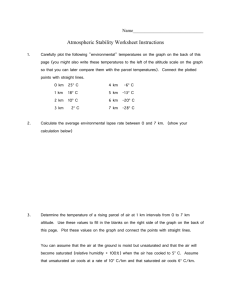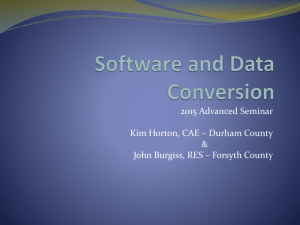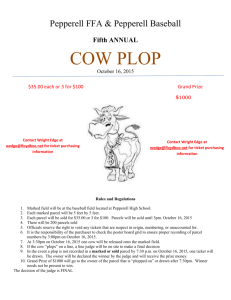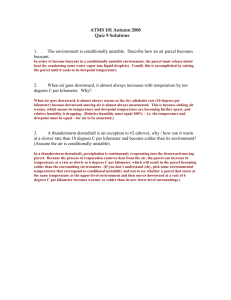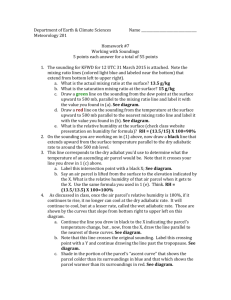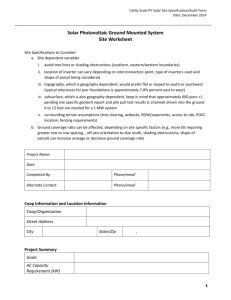Physical Oceanography
advertisement
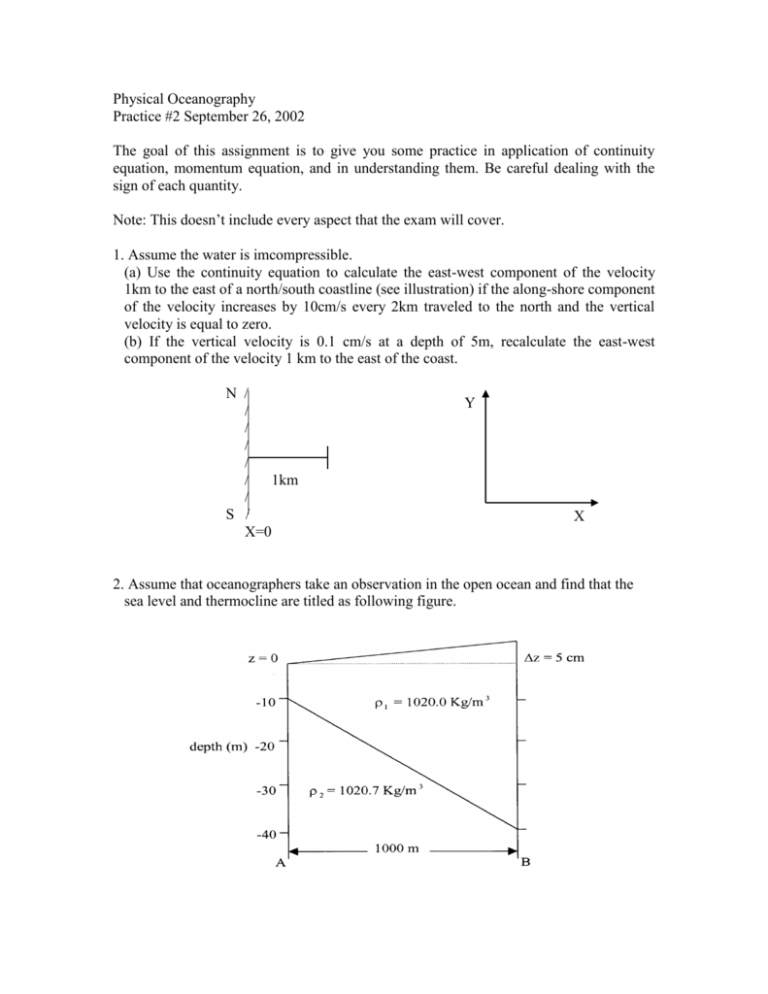
Physical Oceanography Practice #2 September 26, 2002 The goal of this assignment is to give you some practice in application of continuity equation, momentum equation, and in understanding them. Be careful dealing with the sign of each quantity. Note: This doesn’t include every aspect that the exam will cover. 1. Assume the water is imcompressible. (a) Use the continuity equation to calculate the east-west component of the velocity 1km to the east of a north/south coastline (see illustration) if the along-shore component of the velocity increases by 10cm/s every 2km traveled to the north and the vertical velocity is equal to zero. (b) If the vertical velocity is 0.1 cm/s at a depth of 5m, recalculate the east-west component of the velocity 1 km to the east of the coast. N / / / / / / 1km / S / X=0 Y X 2. Assume that oceanographers take an observation in the open ocean and find that the sea level and thermocline are titled as following figure. (a) How long does it take for a parcel of fluid initially at rest to travel from B to A at a depth of 10 m (b) At a depth deeper than 10m, will it take longer or shorter for a parcel of fluid to travel from B to A than it does at 10m? (Assume that the parcel moves on a non-rotating earth) 3. In a two-layer ocean that is 40m deep, where at z= -20m the ocean is stratified, a parcel of fluid at a depth of z= -30m is raised to a depth of z= -4m and them released. After it falls to the depth z=-20m, how much longer will it take the parcel to reach the bottom (z= -40m)? Assume the density for upper layer is 1000 kg/m3, the density for lower layer is 1002 kg/m3. Z=0 1=1000 kg/m3 Z= -20 2=1000 kg/m3 Z= -40 4. The equation of motion can be written as shown below. du dt dv dt 1 P fv x 1 P fu y (a) Insert the correct sign (+ or -) inside the parenthesis (b) For each of the following, write down the equation that describes the motion, indicate what the subsequent motion will look like, and indicate the forces that are present. i) Non-rotating coordinate system with no pressure gradient in which flow is toward the east at time t=0. ii) Non-rotating coordinate system in which there is a sea surface which slopes downward toward the north and the initial flow is toward the east at the time t=0. iii) Rotating coordinate system with a steady flow and pressure gradient, and the initial flow is toward the north at the time t=0. What do we call this motion. 5. Write down the momentum equation for a frictionless rotating earth with no pressure gradients. If you observe the flow at 30º N at a specific time and determine that it is moving northward at 25 cm/s, where will that parcel of fluid be a half sidereal day later? 6. A temperature section below reveals isotherms that slope upwards from 2º N to 8º N. We assume that the earth is rotating, the water density is constant in the upper 50 m along this section, and the sea surface slopes downward towards the north with a magnitude 100 times smaller than the slope of the 28º C isotherm. What is the direction and magnitude of the geostrophic current in the upper 50 m?




